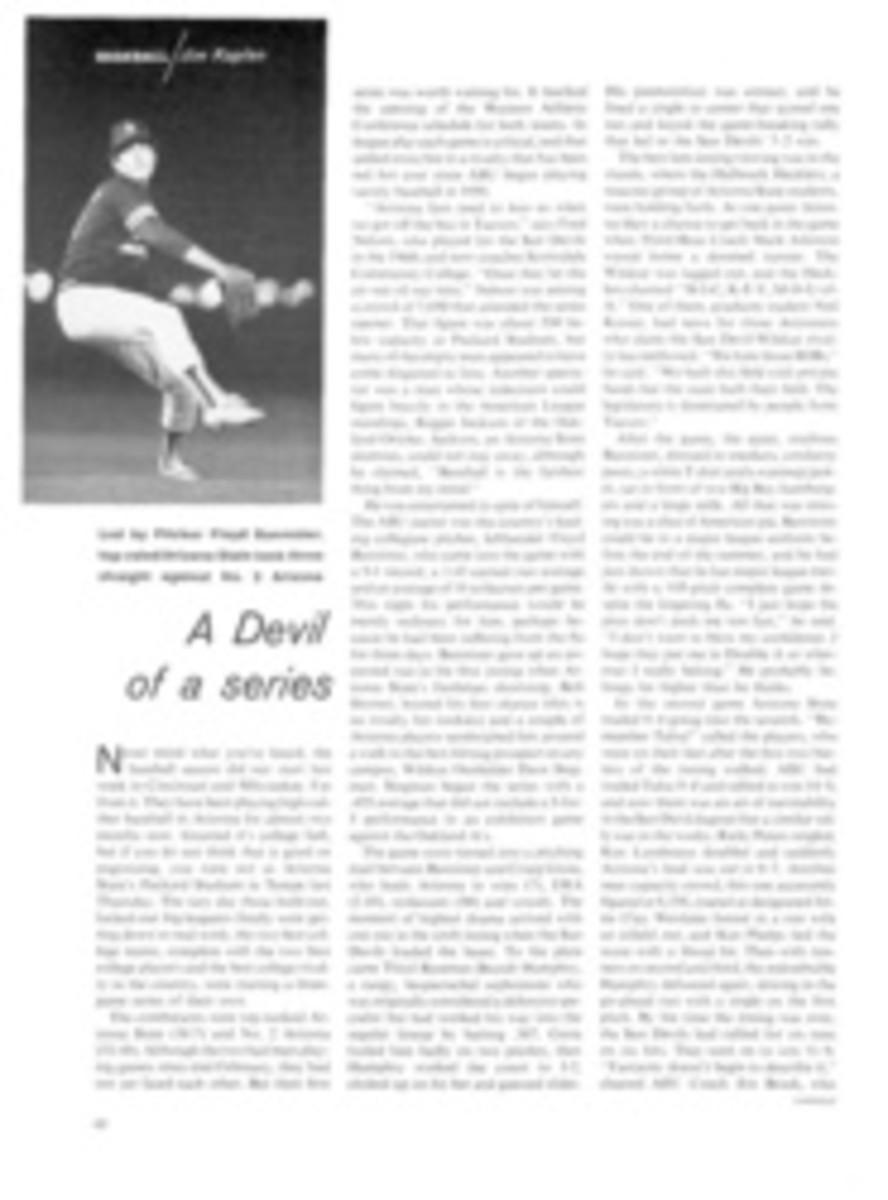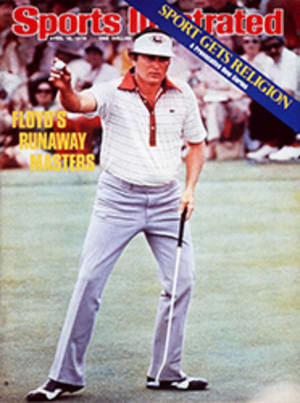
A pack that hopes to be picked
Short-track speed skating is a game full of explosive excitement. It also is a sports orphan, standing on the outside and looking in at the Olympics. The First World Short Track Speed Skating Competition last weekend at the University of Illinois in Champaign-Urbana doubled as an audition for the International Skating Union, and when it was all over the future looked a bit brighter. Skaters from 10 nations had shown their stuff; the ISU strongly indicated that it might adopt the sport; and everybody left the rink figuring that, if it's the Midwest today, tomorrow it's the world.
But either way, for the spectators short-track skating is one of the better buys in sports. The speedsters blast off in packs, usually six to an event, circling a 100- to 125-meter rink when the races are staged indoors. And on the short and narrow courses, with the skaters bunched at speeds up to 30 mph, it gets scary. It is common to see a body come flying out of a pack and slide, twirling, across the ice until it crashes into a wall. The result is something like a track event on blades, at distances from 250 to 3,000 meters, with just a dash of roller derby. Not that violence is condoned. After the start, where all the flailing bodies seem intent on merging into one, the policing is strict and one keeps his hands and elbows to himself.
Unlike speed skating in the Winter Olympics, where two skaters race independently against the clock on a 400-meter track, pack skating never leaves any doubt as to who is leading. Or, at the instant of crossing the finish line, who has won. Says Lars-Olaf Eklund, the Swedish captain, "Sometimes at the Olympics, when one skater has fallen and the other is a bad skater going 10,000 meters, it is quite easy to fall asleep. The word for it is boring."
Boring was decidedly not the word for the relay races at the Illinois meet. A European innovation that at times resembles a demolition derby, relays are skated at distances from 1,500 to 5,000 meters, most often with teams of four, and a skater can enter and leave a race as many times as he likes except on the final two laps. Usually a skater will go one lap—at Illinois that was 125 meters—before giving way. No batons are used. The fresh skater awaits his teammate as he comes boiling out of the last turn; he is given a powerful two-handed push on the seat of the pants and goes roaring off. This means that for several seconds there are eight skaters on a very tiny stretch of the track: four of them taking off, four trying to get out of the way. To see it is to believe it.
Until The First World etc., the Americans had never even witnessed a relay race. "We all thought it was a joke," said Alan Rattray, a 20-year-old draftsman from Los Angeles and a two-time U.S. national champion. "I thought it was stupid and dangerous. But it really is a lot of fun. We were all surprised. We had just one night of practice, and when we went out in the semifinal we were really smooth." Smooth enough, as it turned out, to finish second to England in the 3,000-meter final. Then they got a whole lot smoother. All told, the U.S. took four of the five relays and, in fact, pretty much swept the meet, winning 20 of a possible 27 gold medals and 47 of 71 medals overall. But the joy of the competition was more meaningful than medal counts, a state of affairs personified by Australia's Colin Coates, one of those who crashed into the boards and came up laughing. "Hey, that was fun," he said. "Winning is fun; losing is fun; falling is fun. When any part of it stops being fun, you better get out."
For years, getting out (or converting to Olympic-style racing) seemed to be about the only answer for those among the 2,000 registered U.S. speed skaters who wanted to stick with the packs. While plenty of rinks are available, indoors and out, the sport seemed to be facing a dead end. The events of last week may have changed all that.
"We are thinking of more than just the U.S. kids," said Bill Markland, the meet director and one of the prime movers behind the competition. "We are talking to Saudi Arabia, to the South Africans, to Japan. We are saying: hey, you can compete. You don't need those big 400-meter tracks that are so expensive. Build small rinks. For our sport that's all you need. The Eastern bloc countries have dominated speed skating because they are the ones with all the big rinks. Short-track racing can turn that situation around."
But it won't be easy. And Philip O. Krumm, the U.S. Olympic Committee president, figures it won't be soon. The short-track people would like to see their sport in the 1980 Winter Games. Krumm says there is a chance—but only as an exhibition. "It will never get on the 1980 program as a sport. No way," Krumm said as he watched the world competition. "It would be a great step forward just to get it on the program as an exhibition. So many sports are trying to get Olympic recognition. Tennis, baseball, some we never heard of. And there are rules about the number of countries participating in a sport before it can become an Olympic event. Of the 38 countries in the Winter Olympics, only half of them are involved in speed skating...." He shrugged to complete the sentence.
Nonetheless, short-track skating is growing in popularity. Canada's program is second only to that of the U.S. England's and Australia's are both strong. South Africa is holding competitions. Most of Europe is participating and other nations are taking a close look at the sport.
"In Sweden we have discovered going indoors is a way to make people skate," said Eklund. "We have 75 400-meter rinks, but we have 500 indoor hockey rinks we can use for short-track races. All over Europe the ratio is 15 to 1 for the small rinks. And there is general public acceptance. The smaller rinks in the neighborhood make it not so far to go. It is better. We are starting from the bottom, building a good foundation. A lot of countries are doing that. Someday, when our little ones grow up, it will be a very popular sport."
And, as the skaters hope, a real, live Olympic sport. As they said after The First World etc., today Champaign, tomorrow champagne.

